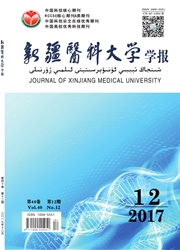

 中文摘要:
中文摘要:
目的探讨冻存人脐带间充质干细胞(hUC-MSCs)异体移植对新生大鼠缺氧缺血性脑病(HIE)的修复作用。方法将96只7日龄SD新生大鼠随机分为正常对照组(n=24)、HIE组(n=24)、新鲜hUC—MSCs移植组(H=24)、冻存hUC-MSCs移植组(n一24),使用RICE法制备HIE模型,术后3d分别将相同体积的生理盐水、新鲜、低温冻存复苏的hUC-MSCs经立体定向仪移植到乳鼠左侧脑室。注射前48h用BRDU标记细胞。术后通过组织切片HE染色、免疫荧光染色鉴定细胞的存活,感觉运动功能测试评定大鼠功能恢复情况。结果复苏后hUC—MSCs增长速度较新鲜hUC—MSCs明显增快,且先进入对数生长期;移植后脑组织HE染色结果显示:与HIE组比较,细胞移植组海马及大脑皮质区的神经元及少突胶质细胞明显增多,组织结构相对清晰;免疫荧光结果显示,移植后的hUC—MSCs可以存活并向损伤部位迁移,在组织中存活至少4w;感觉运动功能测试结果显示:4组足错误左右差值、姿势反射、肢体放置比较差异有统计学意义(P〈0.01),移植组较HIE组有明显改善(P〈0.05),新鲜hUCMSCs移植组与冻存hUC—MSCs移植组比较差异无统计学意义(P〉0.05)。结论冻存hUC—MSCs复苏后仍具有活跃的增殖和分化潜能,异体移植治疗新生大鼠HIE,可促进大鼠感觉运动功能恢复,是HIE移植治疗有价值的细胞资源,可建立脐带库,实现终身干细胞移植。
 英文摘要:
英文摘要:
Objiective To observe the therapeutic effect of rats with hypoxic-ischemic brain damage (HIBD) by transplantation eryopreserved human umbilical cord mesenchymal stem cells (hUC-MSCs). Methods Ninety six 7-day-old neonate rats were randomly divided into 4 groups, normal control group (n=24), HIBD group (n = 24), fresh hUC-MSCs transplantation group (n = 24), cryopreserved hUC- MSCs transplantation group (n =24). The rats (except the normal control group) were established HIBD modles. Transplantation were carried out three days after HIE. Before transplantation, cells were determined by BrdU-incorporation. After transplantation, tissue incision and immunofluorescence were appeared to detect the survival of the transplanted cells in nivo, and sensorimotor function were measured to estimate the recovery of function. Results Cryopreserved hUC-MSCs had higher reproduction ability compared to fresh hUC-MSCs; tissue incision: brain damage was lighten in the transplantationg group compared to the HIBD group. Immunohistochemistry showed hUC-MSCs survived and migrated into the hypoxic-ischemic brain tissue, and can survived in the brain tissue at least 4 weeks; Sensorimotor functiong test: the difference between transplantation groups was not significant (P 〈0.05), while transplantationg groups exhibited significant improvement (P 〈0.05), compared with HIBD group. Conclusion Cryopreserved hUC-MSCs keeps the ability of reproduction and differentiation, hUC-MSCs is a kind of valuable cell resource for the therapy of HIBD.
 同期刊论文项目
同期刊论文项目
 同项目期刊论文
同项目期刊论文
 期刊信息
期刊信息
